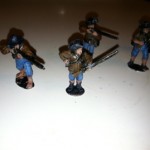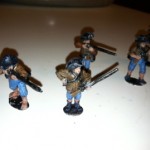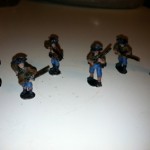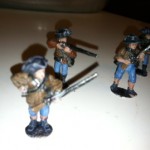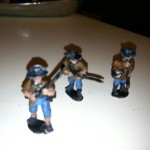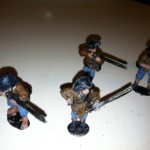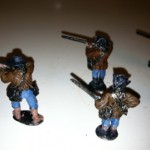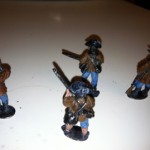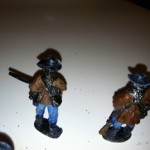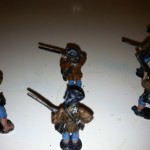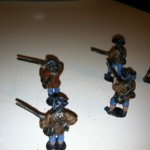Podcast listeners and blog readers will be familiar with my ramblings, frustration, and discussions of Warlord Games’ Black Powder ruleset. Lately, I’ve heavily blogged on this subject. Black Powder has managed to kick Earth out of its orbit by enticing me to paint miniatures. That is a feat I haven’t accomplished in a long time. Don’t believe me? I wouldn’t either but the proof is in my Perry Miniatures articles.
Collecting and painting some finely sculpted pewter 3D representations of the human form is one thing. Using them in a tabletop wargame is something else entirely. The American Revolution, or War of American Independence as it is known in the historical wargaming field, lends itself to more than random one-off battles. It lends itself to a campaign atmosphere. Henry Hyde discusses, in Battlegames Magazine, his Wars of the Faltenian Succession. Early issues of that insightful periodical explain how Henry created this decade plus long imagined campaign. He explains the reasons for his fictitious conflict in issue 1, describes the role of weather and movement in issue 2, map creation in issue 3, continues that in issue 4, personifies his military commanders in issue 5, and even customizes their uniforms in issue 6.
All of this strongly appeals to me. Allow me to step backward and say that most of what Henry is doing appeals to me. I am not, never have been, and likely never will be a person with artistic talent visually speaking. Henry creates stunning hex maps and amazing uniforms. He comes from a background of a graphic designer, which aides his task. Without any of those skill sets in my repertoire it is nigh impossible for me to create a map. My attempting custom uniforms is less likely than humanity colonizing Mars.
What does all of this have to do with Black Powder and my attempt to create an AWI army? A hope and a goal, of course. A smattering of gamers at my local game store, Battleground Games & Hobbies, have or are collecting armies for Black Powder AWI. This group could gather once a week and play a random game. Lobsterbacks versus heroic colonists. Imported Hessians fighting the French. That would be fun for a time and in due course would, likely, fade away.
To achieve a lasting appeal there needs to be more than randomly created games. Playing a historical AWI campaign becomes difficult. Not only is the outcome known but the battles are mostly concentrated in the Mid-Atlantic states. The battle sizes and composition do not lend themselves to adaptability for the gamers who are, slowly, creating and adding onto their armies. Instead of playing a historical campaign, or historical one off games, how about participating in historical what if situations?
This could take the form of a campaign that operates on a parallel but slightly different track to what led to American independence. Or, it could be what if scenarios that alter location, timing, composition, and strength of forces. Maybe it could be un-related what if one off games. Gamer A has one brigade of 10 infantry and Gamer B has half a brigade of cavalry. Instead of trying to find an engagement this compares to, the gamers instead play a what if battle.
Unless you are an “old school” gamer this will be a foreign concept. It was for me until I began to read Battlegames Magazine. There is a strength in the adaptability of the “old school” mindset. Black Powder espouses versatility throughout its pages. It frequently mentions taking the gentlemanly route instead of behaving like a power-gaming or rules lawyering gamer. A significant purpose is to gather with friends and have fun commanding opposing armies of toy soldiers.
In the coming weeks I will continue to paint my Perry Miniatures AWI models and I will also hone this what if mindset. Using Henry’s experience with the Wars of the Faltenian Succession I have begun to breath life into my commanders. My army will actually start life as a brigade of three infantry regiments. Each regiment will consist of 24 models each. Naming my commanders and creating their character traits is particularly exciting.


